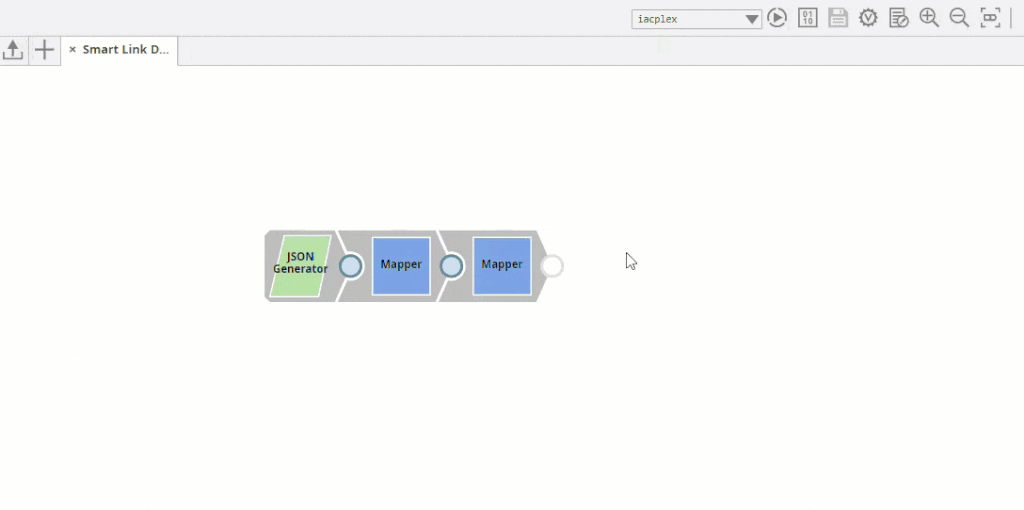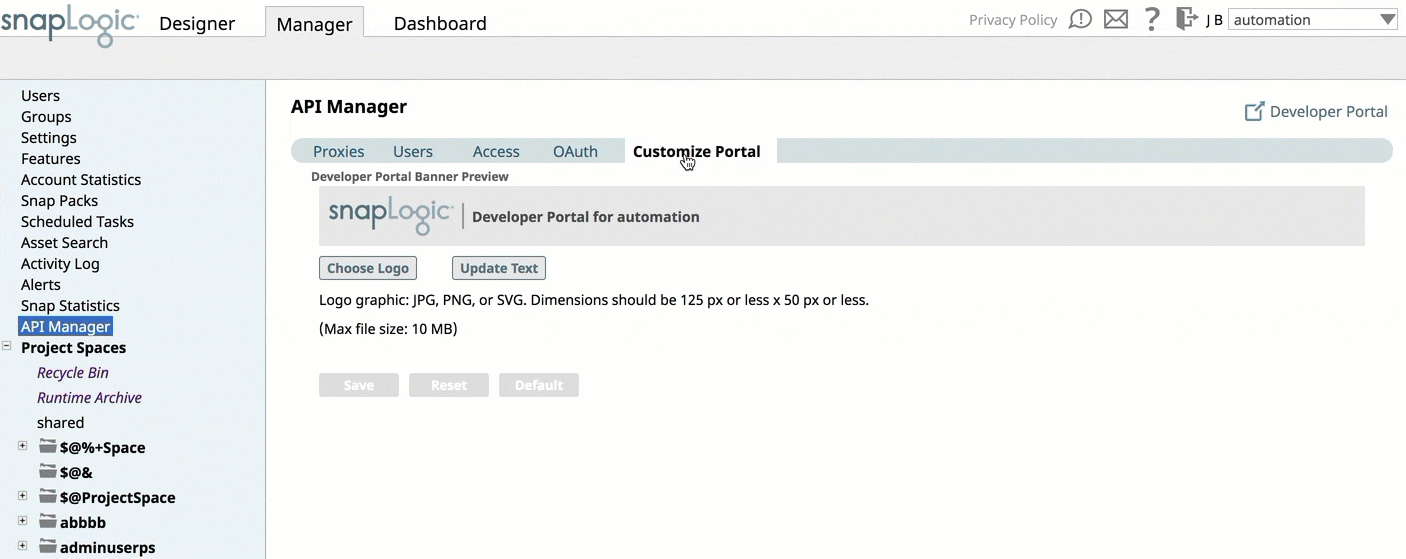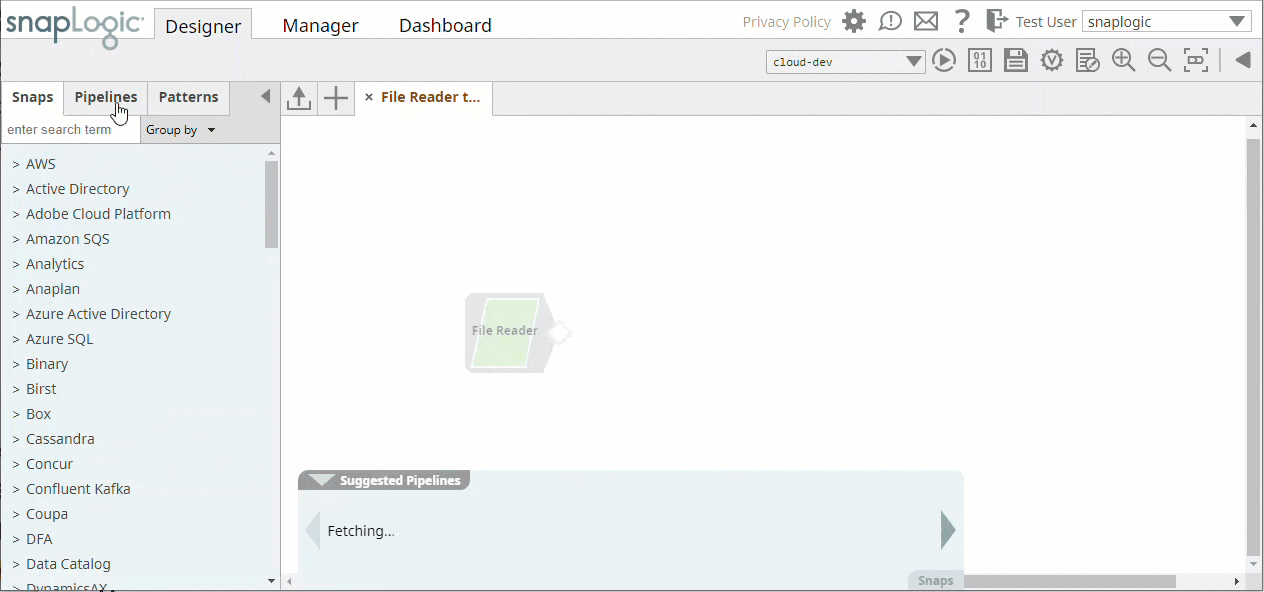Improved productivity with Iris AI updates, easier deployments with Kubernetes support, and enhanced connectivity with support for Coupa and Databricks Delta Lake
We are excited to announce the general availability of the November 2019, 4.19 release of the SnapLogic Intelligent Integration Platform (IIP). This release continues to increase the productivity of integrators, provide better connectivity to applications and data endpoints, and simplify the administration of integration resources.
Improved pipeline recommendations and data mapping with Iris AI
SnapLogic was the first company to introduce AI to the integration space and we have built on that advantage and improved the productivity and integration experience for citizen integrators and integration specialists alike. SnapLogic IIP now provides enhanced full pipeline recommendations based on existing pipelines in the same org and pipeline patterns from the vetted patterns catalog. I want to reiterate the fact that the patterns catalog, previously only available on the community site, is now fully integrated into the product so you can leverage intelligence from the SnapLogic community with a click of your mouse.
Pipeline recommendations have been enhanced in a number of ways. In addition to the pipelines from the user’s organization, Iris AI now recommends intelligently synthesized pipelines based on source and target Snap where no prior art exists. Iris AI leverages intelligence derived from successfully executed pipelines, so even novice users can build complex pipelines quickly on the platform. The platform now also takes into account the pipeline name to recommend contextually relevant pipelines. It refines recommendations as you add more Snaps to the pipeline. The platform can also make suggestions for pipelines with multiple endpoints. E.g. Moving ‘Orders’ data from Oracle database to your data lake in Amazon S3 as well as your CRM system, such as Salesforce. Additionally, if you provide a start Snap, an end Snap, and an intermediate Snap, Iris AI can recommend a pipeline that connects all three in the specified order.

With Iris AI, we have also improved the field-to-field mappings in the Mapper Snap. Now, the new Autolink makes recommendations as it did before, but also provides relevance scores to indicate the accuracy of suggested mappings. You can then review the proposed mappings, see the relevance scores and select which of the mappings to accept.

Watch the SnapLogic Iris AI Enhancement video to learn more.
Ease of administration with Kubernetes support and automated regression testing and a new-look form UI
Managing integration infrastructure can be a complex, time-consuming process. While we have focused previously on integrators, we have not neglected the IT admins who manage SnapLogic environments. We are now making it easy for those SnapLogic admins to manage their container-based and Kubernetes-managed integration environments and get peace of mind during release upgrades with a new automated regression testing capability.
Modern DevOps processes and container management platforms such as Kubernetes enable you to manage your infrastructure as a piece of code. If you are using Kubernetes as your container management platform, you can now deploy Snaplexes (SnapLogic nodes that run integrations) seamlessly. SnapLogic provides helm chart support so that you can define and automate the deployment of even the most complex of Snaplex deployments.
The Automated Regression testing feature that we are adding in the November release also simplifies administration. SnapLogic admins can designate business-critical pipelines for automated regression testing. Before and after every release upgrade, the SnapLogic test team will automatically run those designated pipelines on your behalf and subsequently provide a delta report so that your admin teams can readily identify and rectify issues and thereby reduce the chances of business disruption.
Another key enhancement that we are excited to introduce is our new-look form UI. Our UI team has rewritten the forms inside the SnapLogic using a new framework that provides better functionality, customizability, and better responsiveness for a great integrator experience. You can see the new look-and-feel in the GIF below.

Improved ease-of-use and customizability with SnapLogic API Management updates
The SnapLogic API Management offering, available as a subscription feature, allows organizations to simplify the management and deployment of APIs and enable self-service for API consumers. With the November 2019 updates, your organization can
- Customize the look and feel of the API Developer portal for a better API consumer experience with the ability to import a custom logo and add custom banner text.

- Modify previously created API proxies (containers for APIs that share a set of policies and users) by editing policies or modifying APIs included in a given proxy. With this feature, API managers no longer have to tear down existing proxies if the business requirements around the integration assets change.
- Add a policy to a proxy that limits the payload size for API requests. This feature helps API managers apply organizational policies that demand limiting of input file size to protect critical backend systems.
Learn more about the SnapLogic API Management offering here.
SnapLogic eXtreme Enhancements
We have improved our SnapLogic eXtreme, big data offering, with improved connectivity. SnapLogic now supports Databricks Delta Lake technology. Databricks Delta Lake is a schema-enforcement layer on top of traditional data lakes in AWS S3 or Azure Data Lake Storage which makes data lakes more reliable. We have added Delta Lake Select, Delta Lake Insert, and Delta Lake Merge Into Snaps to read and write data to Delta tables.
Additionally, SnapLogic IIP can now read from and write to Azure Data Lake Storage Gen2 with eXtreme pipelines. This is in addition to the Windows Azure Storage Blob (WASB) that eXtreme mode pipelines can read from or write to on the Azure cloud.
Improved connectivity and better performance with Snap updates
We have made a number of improvements on the Snaps side to provide you with out-of-the-box connectivity, higher productivity, and better performance.
*New* Coupa Snap Pack: Coupa is a cloud-based business spend management SaaS application that helps organizations with e-procurement, expense management, etc. With the Coupa Snap Pack, we are helping your procurement team seamlessly connect Coupa with other enterprise systems of record such as Workday, Salesforce, and SAP. They no longer have to read documentation and can get to value quickly with Coupa Create, Coupa Read, and Coupa Update Snaps.
Support for Salesforce Bulk API 2.0: Salesforce Bulk API 2.0 provides you with an ability to load large amounts of data into your Salesforce org effortlessly. It supports automatic file batching resulting in a better upload performance. We have added Salesforce Bulk Create, Bulk Delete, Bulk Update, and Bulk Upsert Snaps that support the Salesforce Bulk API 2.0.
PostgreSQL Snap Pack Updates: We now provide the ability to ingest large amounts of data into your PostgreSQL database with a new Bulk Load Snap. With this Snap, you can upload thousands of rows of data in just seconds rather than hours. Now, this Snap Pack also supports dynamic accounts, whereby users can pass the account credentials at pipeline runtime, which enables better reuse of integration resources across multiple roles.
Snowflake SCD 2 Enhancements: We have enhanced the Snowflake SCD 2 Snap to now support auto-historization. You can specify auto-historization rules to historize incoming records automatically to handle scenarios where the records from the upstream source arrive out of order.
Watch the Snap Enhancement video to learn more.
Learn more about these updates by visiting the SnapLogic Documentation. You can also visit the SnapLogic Community to learn more.














